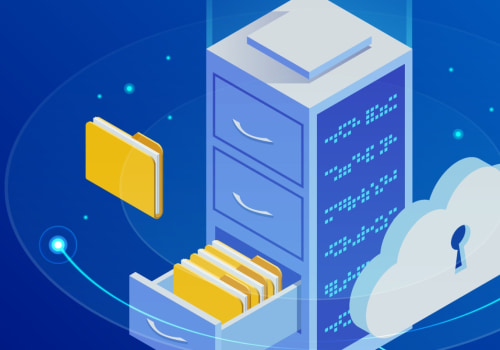Data access controls are an essential part of ensuring compliance with regulations such as HIPAA IT compliance. While it can be easy to overlook the importance of data access controls, they are a critical component in any organization's security strategy. This article will explore the various strategies that organizations can employ to ensure data access control compliance and how they can help protect confidential data. With the right controls in place, organizations can ensure they are meeting their HIPAA IT compliance requirements while also protecting the data they store and access. Data access controls are security measures that organizations can use to regulate who has access to their information systems and data.
These controls are essential for any organization that wants to protect their data from unauthorized access, misuse, and malicious actors. The different types of data access controls include:Access authorization: This type of control limits access to certain systems and resources to only authorized users. This is done through user authentication, such as passwords and two-factor authentication.
Access control lists (ACLs):
ACLs are used to define which users have access to specific resources and information. They are used in conjunction with user authentication measures to ensure that only authorized users can access the data.Data encryption:
Encryption is an effective way to protect data from unauthorized access.It involves encoding the data so that only those with the appropriate decryption key can view it.
Audit trails:
Audit trails are logs of activities that take place within a system. They can be used to track who accessed which systems and when, allowing organizations to monitor and detect any suspicious activity. When implementing data access controls for HIPAA IT compliance, organizations should consider the following best practices:Establish user authentication measures: User authentication is essential for ensuring that only authorized users can access sensitive information. Organizations should establish strong passwords, two-factor authentication, and other measures to ensure that their systems are secure.Create clear policies and procedures:
Organizations should create clear policies and procedures that outline who has access to which systems and data. This will ensure that everyone understands the rules and regulations around data access.Monitor activity:
Organizations should monitor their systems for any suspicious activity or unauthorized access attempts.This will help them detect any potential threats before they become a problem.
Implement encryption:
Encryption is a powerful tool for protecting sensitive information from unauthorized access. Organizations should encrypt their data to ensure that it is secure from malicious actors.Update regularly:
Organizations should regularly update their systems to ensure that they have the latest security measures in place. This will help them stay ahead of any potential threats.Types of Data Access Controls
Data access controls are an important part of meeting HIPAA IT compliance standards.There are several different types of access control which can be used to ensure that only authorized personnel have access to sensitive data, while also protecting the organization from malicious actors. These include access authorization, ACLs, encryption, and audit trails.
Access Authorization
is a form of data access control which requires users to provide authentication credentials in order to gain access to a system or data. This form of control is usually implemented in the form of username and password authentication, as well as multi-factor authentication.ACLs (Access Control Lists)
are used to restrict access to specific resources, such as files and directories. These lists specify which users have permission to access which resources, as well as the type of access they are allowed to have.Encryption is a data security measure which scrambles data so that it can’t be read by unauthorized personnel. This can help protect sensitive data from unauthorized access or malicious actors.
Audit Trails
are records which track user activity on a system or network. Audit trails can be used to monitor user activity and detect suspicious behavior.This can help organizations identify any potential security breaches or other issues.
Best Practices for HIPAA IT Compliance
Data access controls are essential for any organization looking to meet HIPAA IT compliance standards. Implementing the right controls is key to protecting sensitive data and preventing unauthorized access. To help organizations comply with HIPAA IT regulations, there are a number of best practices that should be implemented.User Authentication Measures
- Implementing user authentication measures is essential for ensuring that only authorized personnel have access to sensitive data.This can include multi-factor authentication, single sign-on, and other authentication processes.
Clear Policies and Procedures
- Organizations should create clear policies and procedures regarding data access. These policies should specify who has access to what data, and under what conditions.Monitor Activity
- Regularly monitoring user activity can help ensure that only authorized personnel have access to sensitive data.This can help identify any potential breaches or unauthorized access attempts.
Encryption
- Encrypting data is a key part of data security, and can help protect sensitive information from malicious actors.Update Regularly
- Organizations should regularly update their data access controls to keep up with the latest technologies and changing regulations. This will help ensure that the organization remains compliant with HIPAA IT standards.Data access controls are an integral part of achieving HIPAA IT compliance. By understanding the different types of data access controls, creating clear policies and procedures, monitoring activity, implementing encryption, and updating regularly, organizations can ensure that their systems are secure and compliant with HIPAA IT requirements. This helps to protect sensitive data from unauthorized personnel, while also protecting the organization from malicious actors.








Leave Message